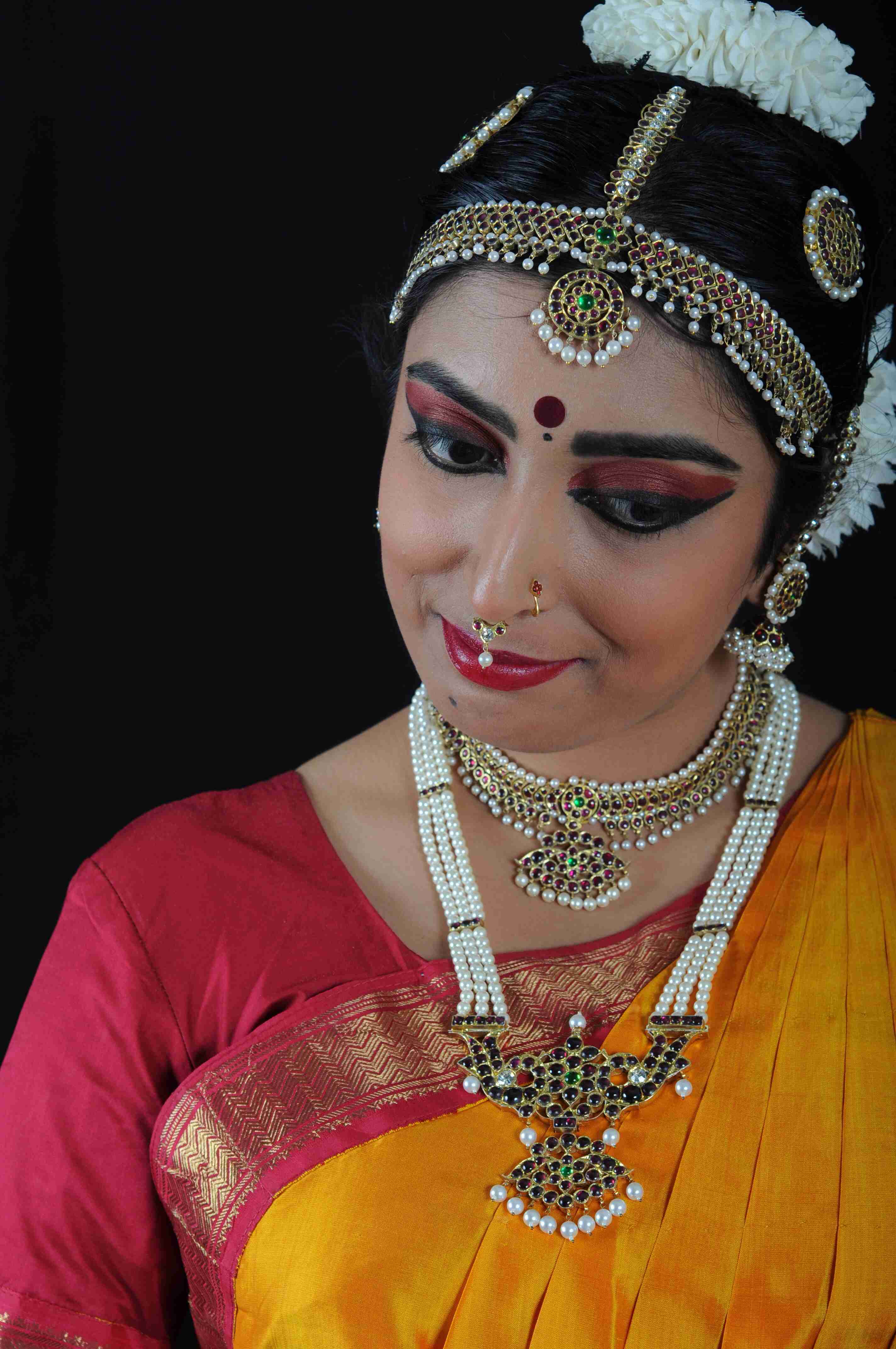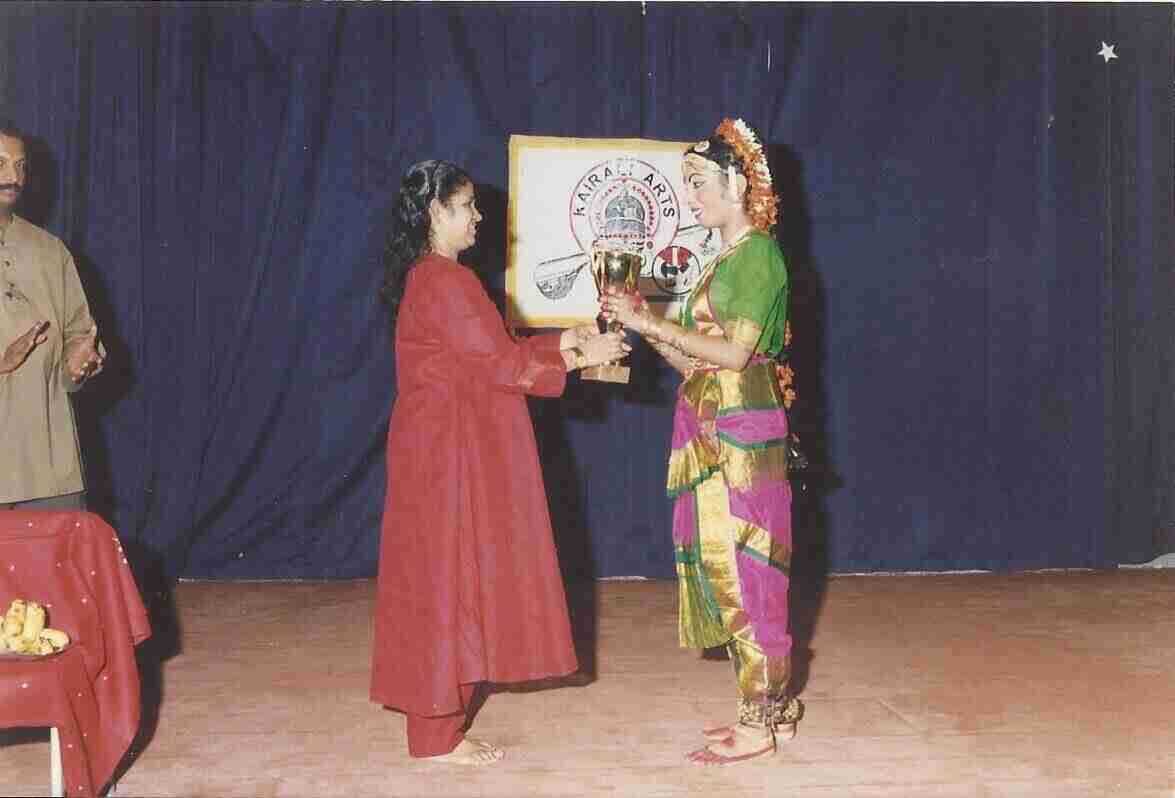
Bharatanatyam is an indian classical dance form which is originated from the southern part of india "Tamil Nadu”. Bharatanatyam is performed with religious themes of gods and godness. It is characterised by sharp movements with expressive body language. Bharatanatyam came from a Sanskrit word where “bha” means bhava or emotions and “Ra” means raga or melody and “Ta “ thala or rhythm and thus bharatanatyam means a dance form that expresses bhava , raga , thala. It contains different types of bani which means different styles specific to a guru or a school. Here we will be focusing on “kalakshetra bani”. We will be learning adavus combining with theory. There are three categories in a bharatanatyam performance like most of the indian classical dance forms. They are “Nritta” “Nritya” and “Natya”. Nritta is the fast and rhythmic movement of the dance while Nritya focuses more on the abhinaya or facial expression while “Natya “ is a play or a team performance but can be performed by a solo performer as the dancer performs using body movements to showcase certain characters.
